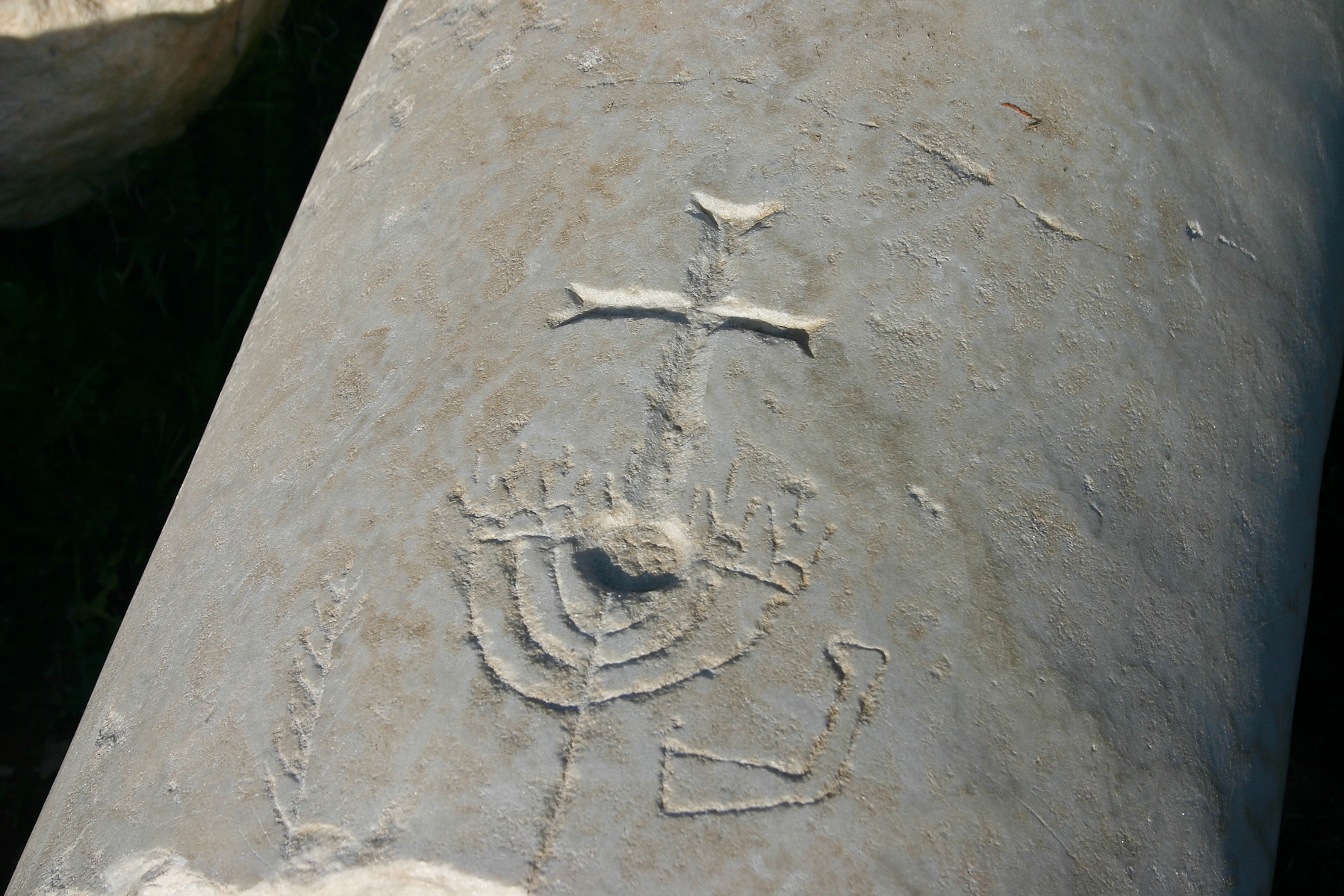Image courtesy of Holy Land Photos.
The image of the menorah on this column fragment, flanked by a shofar, a ram’s horn, to its right a lulav, a palm frond, to its left, was a well-known visual trope in Jewish art across the empire, but our piece is distinguished by the fact that this is the first archaeological evidence for the Jewish community of Laodicea. The form of the menorah is also typical, though the portrayal of flames as short irregular lines is less common.
What makes this portrayal unique, however, is the very large cross that is superimposed on the upper branches of the menorah; its round base is deeply gouged over the upper branches. The cross – asymmetrical and carelessly carved – is nonetheless a much stronger image than the menorah. Its lines were carved widely and deeply with a far more secure hand than the compositionally more complex menorah below. This column is an excellent example of the ways communities created symbols for themselves in the ancient world. For the Jews, a symbol drawn from the Jerusalem Temple cult; for the Christians, a memory of the crucifixion; for both, a simple vertical and highly linear cipher that expresses something about each community in shorthand. Here they were, expressing the same formal vocabulary, one superimposed upon the other. Here was the “smoking gun,” the iconographic evidence for the process of Christianizing the physical environment of the empire, which included the destruction and appropriation of polytheistic and Jewish sacred spaces.
